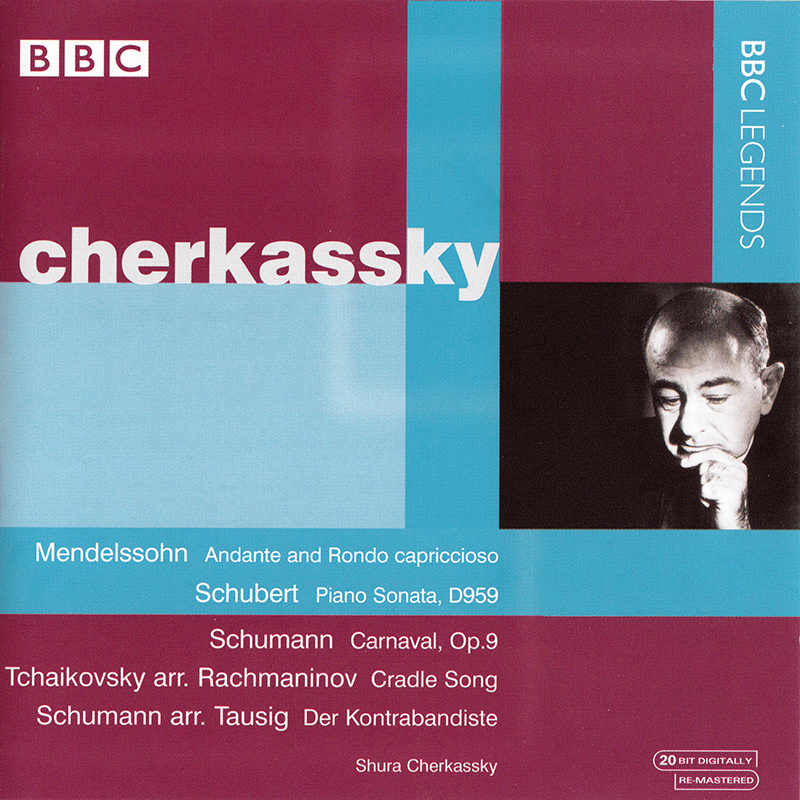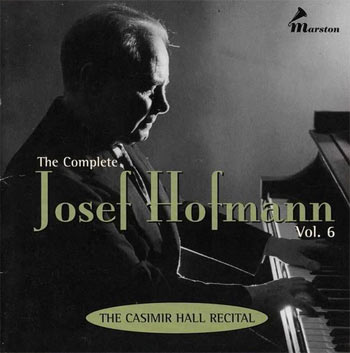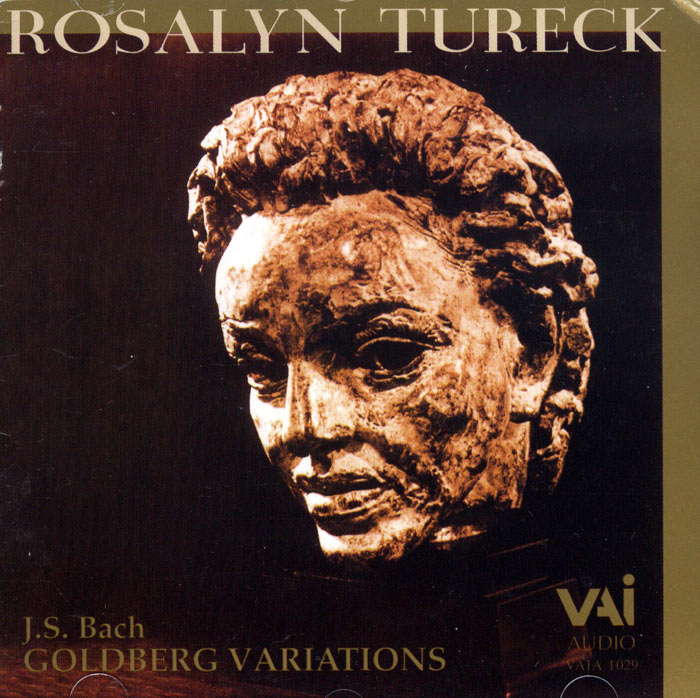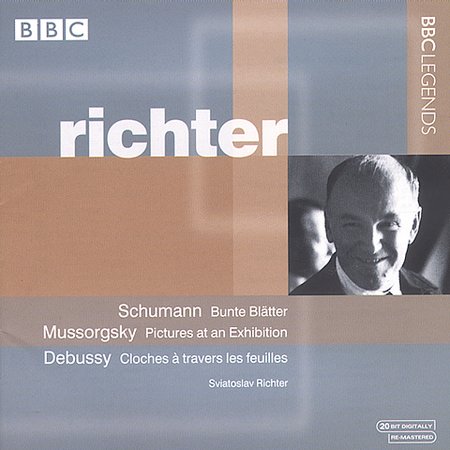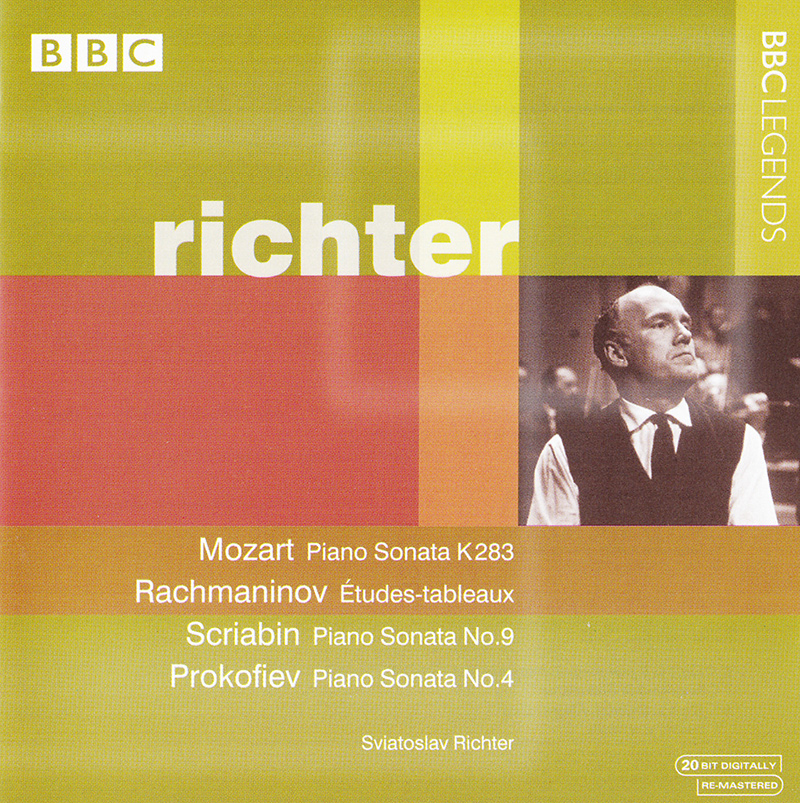Logowanie
Mikołaj - ten to ma gest!
Elton John, The Mamas & The Papas, Cat Stevens, Rod Stewart, Bobbie Gentry, Stevie Wonder, Engelbert Humperdinck
Memory Lane
Edycja Numerowana - 1000 egzemplarzy w skali światowej
RACHMANINOV, Eiji Oue, Minnesota Orchestra
Symphonic Dances / Vocalise
Best Recordings of 2001!!! NAJCZĘŚCIEJ KUPOWANA PŁYTA Z RR!
Karnawał czas zacząć!
Music of Love - Hi-Fi Latin Rhythms
Samba : Music of Celebration
AUDIOPHILE 24BIT RECORDING AND MASTERING
CHOPIN, LISZT, DEBUSSY, DVORAK, Gerhard Oppitz
Dances romantiques - A fantastic Notturno
Wzorcowa jakość audiofilska z Clearaudio
Winylowy niezbędnik
ClearAudio
Double Matrix Professional - Sonic
najbardziej inteligentna i skuteczna pralka do płyt winylowych wszelkiego typu - całkowicie automatyczna
MENDELSSOHN, SCHUBERT, SCHUMANN, TCHAIKOVSKY, Shura Cherkassky
Andante and Rondo capriccioso in E Major / Piano Sonata in A Major, D. 959 / Carnaval, Op. 9 / Der Kontrabandiste
- Shura Cherkassky - piano
- MENDELSSOHN
- SCHUBERT
- SCHUMANN
- TCHAIKOVSKY
Celebrating the Shura Cherkassky (1909-1995) centennial, as well as the Mendelssohn bi-centennial year, this Queen Elizabeth Hall, London recital, 1 November 1970, opens with a beguiling, transparently lyrical performance of Andante and Rondo capriccioso in E Major, Op. 14, which after a tuneful first part, renders the Rondo in fleet figures whose kinship with A Midsummer Night’s Dream cannot be denied. Schubert only attracted Cherkassky with two of his A Major sonatas, the D. 664 issued by Decca, while it was World Record Club that inscribed the late A Major in 1960, never reissued in CD format. Cherkassky plays the A Major first movement as a study in contrasting textures and color dispositions, the runs and ostinati acting as intermezzos between periods of melancholy, tender reflection. Ever the Cheshire Cat in music, Cherkassky seems more concerned with touch, left-hand articulation, and dynamic coloration than with logistics and architecture, since the movement meanders, its mood swings fascinating because of Cherkassky’s active palette. Cherkassky imparts a delicate mystery to the Andantino, like his esteemed teacher, Josef Hofmann, the fingers lithe dragonflies. The dark middle section–contrapuntal in the style of a Bach fantasia–basks in the Cherkassky resonance, although the ethos seems skewed. The da capo has the plaintive melody set over a fateful dirge and trill, here given the Godowsky treatment in color stretti. Brisk, agile figures mark the Scherzo, tantalizing and coy, played as etude in non-legato. The last movement is all the old Cherkassky magic, especially in degrees of jeweled pianissimo. Flowing melody and exalted stretti mark every page, a colossus of nuanced beauty and sheer, tonal relaxation. The willful, whimsical sides of Cherkassky’s character range freely in Schumann’s beloved Carnaval suite, a dramatically precocious performance, played for speed, elan, and crisp expression of the composer’s theatrical personae, many of which derive from anagrams of his name and his town, Asch. For the repeats, no melodic line appears in its guise verbatim; always, some slight nuance, metric pulse, or accent finds its way to the shimmering surface. The Commedia dell’arte figures, Pierrot, Arlequin, and Coquette prance even as they pout. The Valse noble reveals contrapuntal subtleties we have missed countless times. A leisurely Eusebius allows the left hand to intimate the “little scenes on four notes” or “Papillon” and “Dancing Letters” motifs that permeate these fanciful, masked ball revelers who eventually march against anti-cultural complacency. Florestan seems rather impetuous, though his throes break off into a confrontation with a skittish Coquette. Replique tugs at time values and offers the Cherkassky color panoply. Then the passions enter, first in the form of an ardent Chiarina, to be followed by an erotic nocturne, Chopin. The repeat illuminates the left hand sforzati with a hand Scriabin would admire. Estrella haughtily appears and disappears, leading to the brilliant Reconnaisance study, whose own second section takes on some deeper chiaroscuro we will hear later in the composer’s Symphonic Etudes. Frisky lightness defines the Pantalon et Columbine interlude, the da capo of which becomes wildly vivid. A Viennese gait graces Valse allemande, only to yield to the feverish exploits of Paganini, whose bariolage technique waxes supple and demonic. The returned Valse exploits numerous rhythmic indulgences, all of tem easily forgiven. Aveu moves impatiently, anticipating the big, rhetorical gestures in Promenade. Pause moves with lightning speed, calling the Davids-League to arms, resilient and inspired, the responsive audience enchanted. Not on the recorded program is the Hungarian Rhapsody No. 15 of Liszt; but we do receive the two encores, the first of which is Tchaikovsky’s Cradle Song, Op. 16, No. 1 in Rachmaninov’s transcription, a water-piece that splices the lied form with a touch of the nostalgic ballade. Schumann’s The Smuggler (Dar Kontrabandiste) used to be a strong Grant Johannessen encore; no less kaleidoscopic under Cherkassky, the bravura piece blazes in runs, repeated notes, and quicksilver shifts in register. –Gary Lemco





























